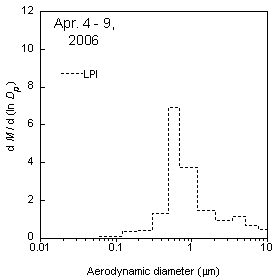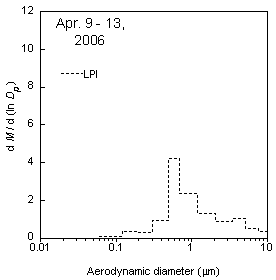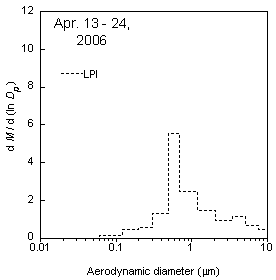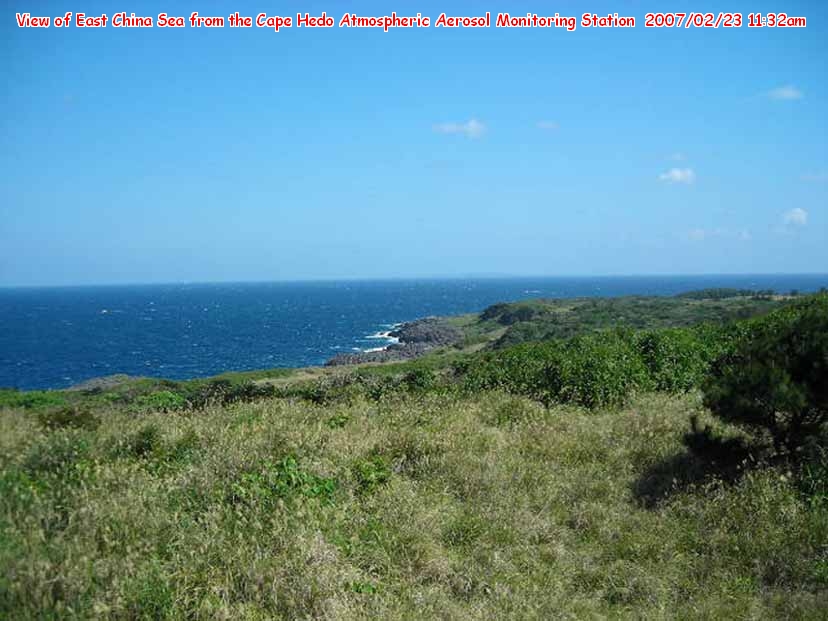Mass size distribution of sulfate aerosol measured at Cape Hedo Atmospheric Aerosol Monitoring Station (operated by NIES) during the 2006 spring intensive monitoring
campaign
Low-pressure impactor : Tokyo Dylec LP-20
Operating flow rate : 24.6 L/min
Impaction substrate : Teflon coated glass fiber filter
T60A20 (diameter :80 mm) |
|
Introduction
Reports on the size distributions of aerosol components are relatively
sparse in the field campaigns conducted in Asia-Pacific rim region, where
the emissions of air pollutants are expected to increase during this century.
The focus of this study is the size distribution of sulfate aerosol, which
is one of the most influential anthropogenic species in view of the climatic
effects. |
Measurements
A low-pressure type cascade impactor (LPI, Tokyo Dylec LP-20) that consists of 12 impaction stages plus backup filter was operated at a remote site in Japan (Cape Hedo of Okinawa Island) in 2006 spring. The cutoffs sizes of each stage at 50% collection efficiency are 11, 7.8, 5.2, 3.5, 2.1, 1.2, 0.7, 0.49, 0.3, 0.2, 0.12, and 0.06 um in aerodynamic diameters at 24.6 L min-1 flow rate. |
Results
At the Cape Hedo station, seven samples of size-segregated aerosols were collected by LPI in 2006 spring, when Asian outflow is predominant. AMS was operated continuously during that period. LPI size distribution yielded a mode in the submicron rage at 0.5?0.7 mm in aerodynamic diameter.
It is noteworthy that the submicron mode of SO42- resides in the stage of unexpectedly large sizes (0.5-0.7 um in aerodynamic or vacuum diameter) both by LPI and AMS measurements. The observed mode in 0.5-0.7 um rage is similar to that found by Hering and Friedlander (1982) for sulfur aerosols in Los Angeles, which is referred to as the gdroplet modeh. The same feature was also reported for the aerosols collected in the mid latitude zone of the North Pacific Ocean (on 175oE longitude line) in 1994 that was attributed to the long-range transport of Asian originated pollutants (Kaneyasu and Murayama, 2000).
|
Reference
Hering, S. V., and Friedlander, S. K. (1982). Atmos. Environ., 16, 2647-2656.
Kaneyasu, N., and Murayama, S. (2000). J. Geophys. Res., 105(D15), 19,881-19,890. |
 |
 |
 |
 |
 |
   |
| LPI sample have been collected in collaboration with Dr.Akinori Takami
(NIES) |

|
|
